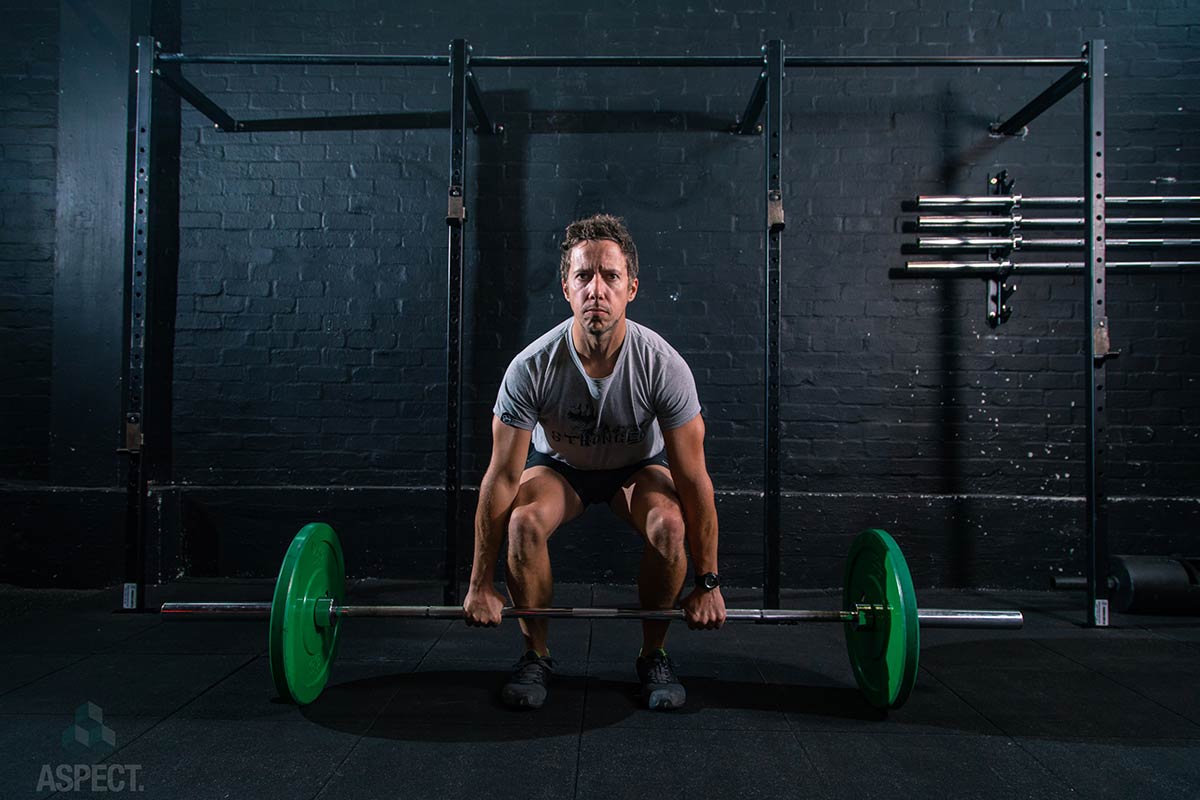We know, there’s no such thing as a stupid question. But there are some questions you might not want to ask your local shop or riding buddies. AASQ is our weekly series where we get to the bottom of your questions – serious or otherwise. Hit the link at the bottom of the post to submit your own question!
It’s still the off-season for most Northern Hemisphere road riders and mountain bikers. Training efficiently during the off-season, putting your body through intense periods of physical stress and well-timed periods of recovery, is critical in allowing you to reach your peak physical performance come the first race of the season. We’ve collated a number of reader questions on cycling training, covering base training, strength training, and technique, pitching them to the industry professionals who make a living dishing out this advice to some of the World’s most accomplished athletes. Before we dive into their responses, let’s introduce each of them individually, to find out why we should respect their advice.
Fay Jordan – Master Personal Trainer
I am a personal trainer with a passion for cycling. I love a challenge and an adventure, but I love to train for the event even more! Using my experience from the Royal Air Force and racing the Enduro World Series I have worked with mountain bikers to develop their strength and conditioning to push harder and faster on the bike. From local riders to EWS Champions I love to help everyone achieve their goals. No challenge is too big so set your sights high and work hard!
Ben Plenge – Strength Factory Coach

Ben Plenge is based in Bristol where he runs The Strength Factory, providing performance coaching to action sports athletes of all levels. He has worked with top DH racer, Charlie Hatton and currently has a wide range of MTB and Motocross athletes including Veronique Sandler, Fergus Ryan, Chris Hutchens and Morgan Tyrrell. Ben rides loads and races enduro, although that has been limited since becoming a Dad.
Jonny – Fit4Racing
Jonny Thompson was previously a forensic science expert who now specialises is strength and conditioning for off-road bike sports athletes. As Head Coach and founder of Fit4Racing, Jonny has trained Paralympic athletes to off-road motorbike stars and is currently training MTB racers: Adam Brayton, Elliott Heap, Jack Reading, Matt Walker (NZL), Emanuel Pombo and the rest of the Miranda team, Meg Whyte, Sandra Rubesam, Kate Weatherly, Brage Vestavik. As well as professional racers, hundreds of amateurs and social riders are following a Fit4Racing program online.
READER QUESTIONS
- Is there a refined or optimal way to pedal while out of the saddle on the trail? This is something I’ve often wondered as I tend to experience rapid fatigue in the muscles of my lower back when sprinting out of the saddle on low gradient descents, forcing me to sit for a couple of seconds of rest. Am I doing it wrong, or do I need to strengthen my back muscles? If the former, what is the correct technique, and if the latter, how should I go about this?
Fay Jordan, Master Personal Trainer: Riding out of the saddle and standing up on the bike allows us to take the pressure off muscle groups that do all the work when we pedal seated. By standing up we can produce more power to help us tackle steeper sections of a trail as well as being essential for putting the power down to increase speed.
When we pedal out of the saddle on the trail we shift our centre of mass up and forward and the muscles of the upper body and trunk take up more of the work as well as helping to stabilise the bike as it moves from side to side.
To optimise your performance try adding some core and lower back exercises into your training to reduce the fatigue you are experiencing. A strong core will help you maintain good posture and avoid lower back pain.
The plank is the definitive core exercise – minimal movement but maximal effort to support your body.
Dead bugs is a second exercise I would recommend, lying on your back with your arms extended and your legs at 90 degrees, you lower and raise your opposite arm and leg at the same time.
Jonny, Fit4Racing: Firstly, I would suggest you look beyond technique on the bike. Generally, that would be lower down on the list of “fixes”. If however, after implementing the following suggestions, you still find you have an issue I would suggest scheduling an on-bike coach to take a look at you in person.
Lower back fatigue, achy pain or “back pump” can generally can be rectified by strengthening and mobilising areas around the hips and core, then before riding doing a simple warm-up, we’ll discuss how later.
Part of the question was around strengthening the lower back. A common misconception is that a “strong” lower back is good, and we see athletes focusing on strengthening spinal extension. I would avoid this and hopefully an explanation around our suggestions will help you understand why.
We will class your trunk as the area from your hips to your sternum, which includes your lower back. Consider your trunk as a structure which is supported by guide ropes; these ropes act to stabilise that structure. If one or more of those guide ropes is stronger, more flexible, or in a state of disfunction, it compromises the whole structure – your trunk is no longer stable.
So consider the primary role of your core muscles is to brace and minimise movement, rather than being dynamic and initiating movements such as extension of the spine.
That is all well and good were it not for your hips. Because of the intertwined nature of the muscles in the hips to the lower back. If you have tight hips your ability to hold the structure as described above is compromised. Your hip flexors, which comprise of several muscles which are responsible for bringing your legs and trunk together, are normally the cause of lower back issues. But also, weakness in the glutes and hamstrings can mean a disengagement of these more functional muscles, putting unnecessary strain on the lower back… so strengthening these is a priority.
With this perspective, think about improving your core bracing ability with static holds, particularly side planks, improving your general hip mobility with a focus on hip flexors (see the crush stretch), and strengthening your glutes and hamstrings with movements such as single leg deadlifts, and good form hinging movements.
Before wrapping this question up, it is worth noting that by improving in these areas will not only alleviate discomfort but increase performance. Back pump is an indicator that your body isn’t working optimally, change that and you’ll see an improvement in all areas of your riding.
Ben Plenge, Strength Factory Coach: The rapid fatigue in the lower back suggests that a number of factors may be at play here. The first would be the posture of the lower back and pelvis. Many riders who come to see me spend too long sitting down and as a result they can develop a lot of tension in their hip flexors, pulling their pelvis forwards and putting increased pressure on the lower back.
2. I’ve often heard that running can help our cycling performance, but cycling cannot help our running performance. Is it true, and if so, why is this? Is it because we use different muscles to pedal seated than when out of the saddle?
Fay Jordan, Master Personal Trainer: Due to the differences in the way your muscles are used when running and cycling and the specific movement patterns for each, it would be easy to say that cycling cannot help running performance. However, if used properly, cycling can be an extremely effective cross training tool for runners.
Running puts a far greater load on your joints as well as creating torque through the lower back and hips from putting one leg in front of the other, cycling on the other hand is much smoother, it uses a rotational movement of the legs, while your lower back and abdominals stabilise your body. However, it must be noted that both sports use the same muscle groups in the legs, so training on the bike or running will cause fatigue.
Cycling can help running performance as a way of maintaining your overall cardiovascular fitness, as well as allowing you to carry out low-impact training sessions. Runners often use cycling as a powerful cross training tool, using time on the bike to break up time on their feet, adding active recovery rides as a complement to their running specific training and to ensure they maintain cardiovascular fitness if they sustain an injury that prevents them from running.
Jonny, Fit4Racing: It’s not quite as clear cut as running helps cycling but cycling doesn’t help running. Any activity that raises your general fitness, stamina and endurance will help you ride better to some extent, even swimming which involves very few of the lower body muscles we use to ride. So for example, if your cardiovascular fitness is the failing point to your running ability then yes, cycling will help.
With that in mind though, you can generally hold a higher heart rate, and increase it faster whilst running as compared to while cycling, which in turn allows for more variation in training and potential increases in fitness. This is due to the muscular endurance requirements of cycling at a high enough power vs running.
Ben Plenge, Strength Factory Coach: I am going to slightly dodge this as most of my athletes hate running so it has not been an issue! Whilst it can be beneficial to cycling, the high injury rates amongst runners mean that I do not suggest to my riders that they run unless they wish to and they enjoy it.
3. I’ve never done any strength training before but am trying to incorporate strength training into a 10-week race preparation programme. However, to perform two strength sessions means that I need to replace two on the bike sessions. Does that mean that my on the bike progress will be slower but more sustainable compared to conventional plans? Is it good idea to start now or should I wait for base training before I commit to off-the-bike strength training?
Fay Jordan, Master Personal Trainer: Resistance training is definitely on the rise in terms of popularity and it is widely recognised as a key component in any training programme if you wish to achieve optimal performance. Resistance training can offer some amazing benefits for cyclists if done properly, the most obvious of which is strength and muscle building, but there are additional benefits such as a faster metabolism, reduced pain, and injury prevention (as stronger bodies are less prone to injury).
Adding resistance training into your programme will have an extremely positive effect on your performance allowing you to strengthen your core and lower back, strengthen your primary muscles and strengthen the assisting muscles that you will use on the bike. The result will be that you experience less fatigue later in a race, allowing you to put down more power. In summary, the aerobically stronger your muscles and core are the less fatigued you will be on the trail.
Resistance training implemented in a plan with bike specific sessions should allow you to make greater progress as a strong and stable athlete than a programme with biking alone.
Bodyweight exercises can be completed from anywhere and started immediately, whilst weighted exercises should be completed under instruction to ensure form and technique are correct.
Jonny, Fit4Racing: Strength training can increase your speed, power and top end endurance however, for that to happen optimally, it must be incorporated correctly. Without understanding more about the racing you will be doing, how much and what type of riding you are currently doing, it’s difficult to give you a suggested prescription for strength training. Instead I will try and give you some general advice.
Because your race is only 10 weeks out, try to incorporate strength training into capacity workouts where possible and avoid trying to increase lower rep range maximum lifts. This way you can increase your ability continually up to the race instead of potentially compromising your on-bike fitness in search of absolute strength.
If you have the chance to ride up to 3 times per week don’t substitute any of those rides for a strength training session this close to a race, especially as you are reasonably new to it. Instead, add some simple strength and conditioning and core work on top of your on-bike training up to 2 times per week. If however, you are riding up to 5 times simply for fitness, swapping out at least one might increase the effectiveness of your training and improve your ability for the race.
Whatever you choose to do, make sure your recovery is on point. Ramping up training, especially when strength training, can result is a state of fatigue which will compromise the efficacy of your training. When you need to, take rest days and reload, eat, sleep and hydrate well.
If you are set on incorporating some compound lifts (squats, deadlifts etc) with the intention of building strength, you can also tag onto the end of that session some intensity/sprint work. This will mean your on-bike can be longer and you’ll get a broader mix of physical ability increase.
Swapping out some on-bike training doesn’t necessarily mean your on-bike progress will slow. For example, if you race enduro and have a need for short efforts, fast recovery, agility and a more general physical ability and all you’re doing is putting miles in on Strava 5 times a week, swapping out for 2 strength and conditioning sessions will definitely help.
Ben Plenge, Strength Factory Coach: If you are totally new to strength training, then 10 weeks out is quite close to the event to start, especially given the learning curve when starting in the gym. Having said that, a well designed programme should still boost your performance on the bike and not leave you too sore to ride. Maybe try strength training for 4 – 6 weeks and then focus on the bike as you approach the event. It also depends on the event. Is it a DH race, or an XC marathon event? The answers will be different for each event and depending on the level of the rider.
4. Is there a best method for increasing cycling performance and endurance without losing strength?
Fay Jordan, Master Personal Trainer: A well structured training programme is the answer to this one, scheduling sports specific resistance sessions with aerobic training, anaerobic intervals, mobility work and recovery to build strength and cardiovascular fitness over a period of time, tapered into any target races or events.
Jonny, Fit4Racing: If you have little strength to begin with, say a sub bodyweight squat, it is absolutely possible to increase it and still improve your bike performance, in fact, I would encourage it. On the other hand, if you are super strong and want to maintain that but increase your ability over longer rides then there are some things to consider to help maintain it.
Continuing to train strength is a given if you want to maintain it when you increase your riding ability. If you have to do fewer strength sessions, as they often are seasonal, try to incorporate full body training when you can. I know many people split their training week into lower, upper, arms etc. This is entirely wrong to start with, but for the purposes of this answer, try to incorporate full body workouts every session.
Finally, ask yourself why you want to maintain strength. Most riders I know prioritise their riding over everything and are cool with losing some absolute strength. Maintaining your 3-rep max back squat over a period of high volume riding/racing will compromise one or the other and could mean you’re disappointed. Instead, be at one with the fact that the training you are doing is contributing to your goal at the time. Shift your focus slightly instead of trying to spin too many plates, one will likely drop off if you’re expecting high performance in all areas.
Ben Plenge, Strength Factory Coach: The simple answer is to continue strength training to some degree. Depending on the time of year, this may be a full programme or a stripped back, ‘maintenance dose’ of training with high loads and very low volume. An in-season session to maintain strength and power may be as minimal as 2×3 box jumps and a heavy 2 rep deadlift. Then add in some upper body training if required as well as some hip and core work to maintain robustness.
You should also try to preserve muscle mass by properly fueling your rides and ensuring that you consume enough protein.
5. In general, it seems to be an accepted truth that training should be specific. For example, cycling training should be done on a bike. Performing strength training always seems to limit my capacity to get on a bike that week. I might be on a Monday, Wednesday, Friday, Sunday schedule for cycling, but if I mix in a good dose of strength on Tuesday, I won’t be riding on Wednesday because of muscle soreness. How can strength training help, when it limits me in my primary training time?
Fay Jordan, Master Personal Trainer: Please refer to my answer to question 3.
Jonny, Fit4Racing: Getting out on the bike 4 days a week is excellent, but is that because you love it or simply want to improve… or a combination of both? Although breaking in slowly and ramping up will help reduce the impact on your body, inevitably strength training will leave you sore in the early stages. In time though, consistently training will become easier on your body and become more manageable. So, take a hit in the short term until you become “conditioned” to the training and reap the benefits in the long term.
In the meantime, use some common recovery techniques – protein and simple carbohydrates straight after training, mobility, good sleep, nutrition and hydration.
Ben Plenge, Strength Factory Coach: Muscle soreness is the enemy of the cyclist as we approach the season. We therefore need to take measures to eliminate soreness through planning and programming. This needs to start with strength training early in the winter so your body has time to adapt to the stress that it places on your body. It is ok to be sore in winter as you can still get some endurance and base miles done with sore legs. Over a period of weeks, the amount of soreness you experience will dramatically decrease and for seasoned athletes, soreness is rarely an issue at all.
The other issue here is that too many riders do too much volume in the gym. If you want sore legs, then listen to the misguided and dated advice to do 15-20 rep squats to improve muscular endurance. This won’t get you strong, but it will leave you sore. Instead, you should be working towards heavy, low rep training of 5 reps or less assuming that you are able to train this heavy with perfect technique. Heavy strength training will not leave you sore once you are used to it.
As you approach the season, your training needs to become more specific and that usually means a big reduction in strength training volume, either by dropping sessions, or dropping the sets and reps within a session. Intensity needs to be maintained though in order to maintain and possibly gain strength during the season.



